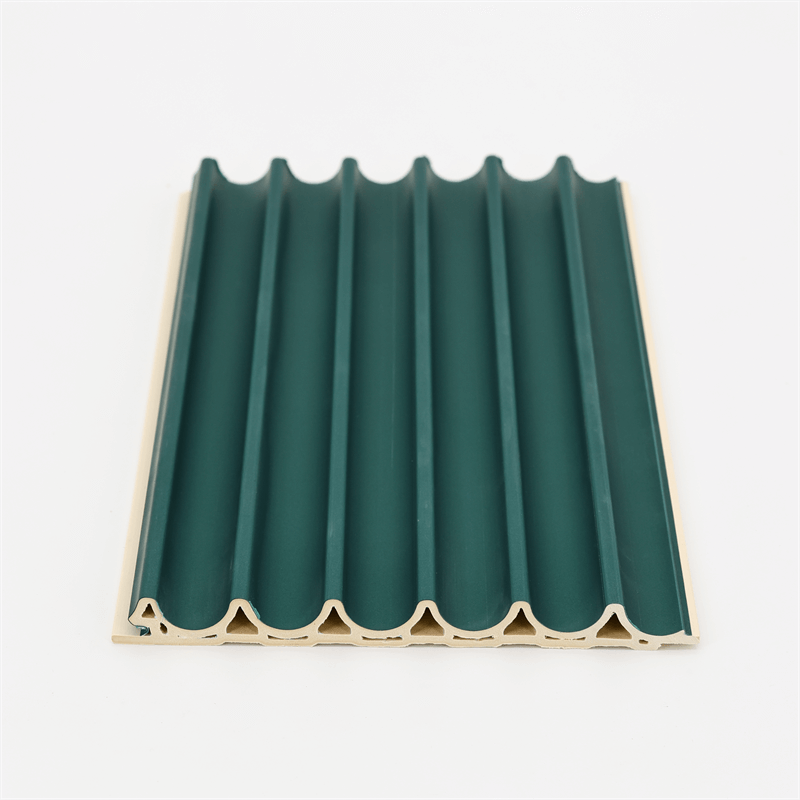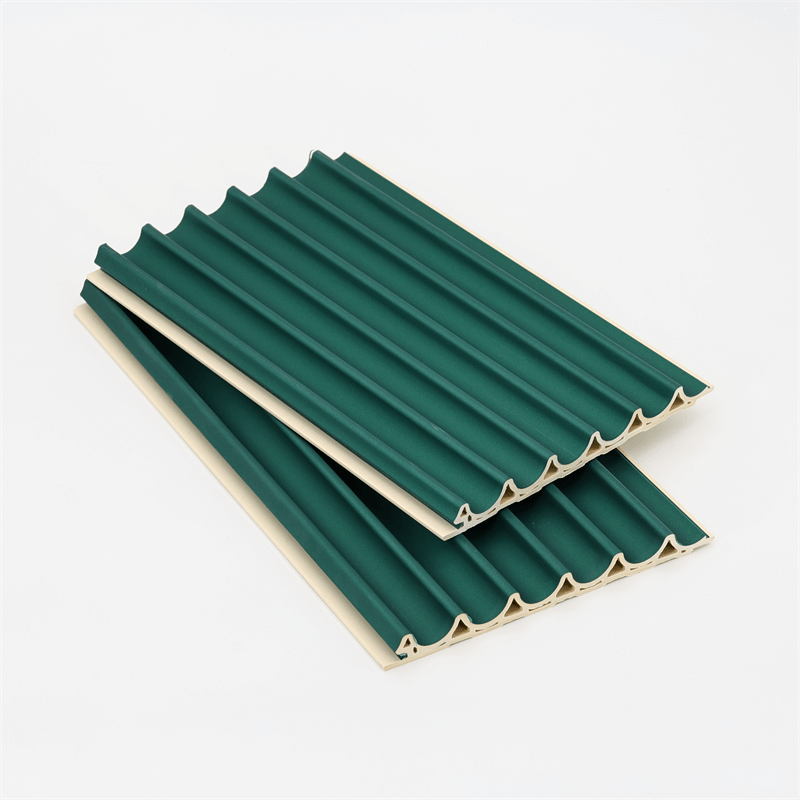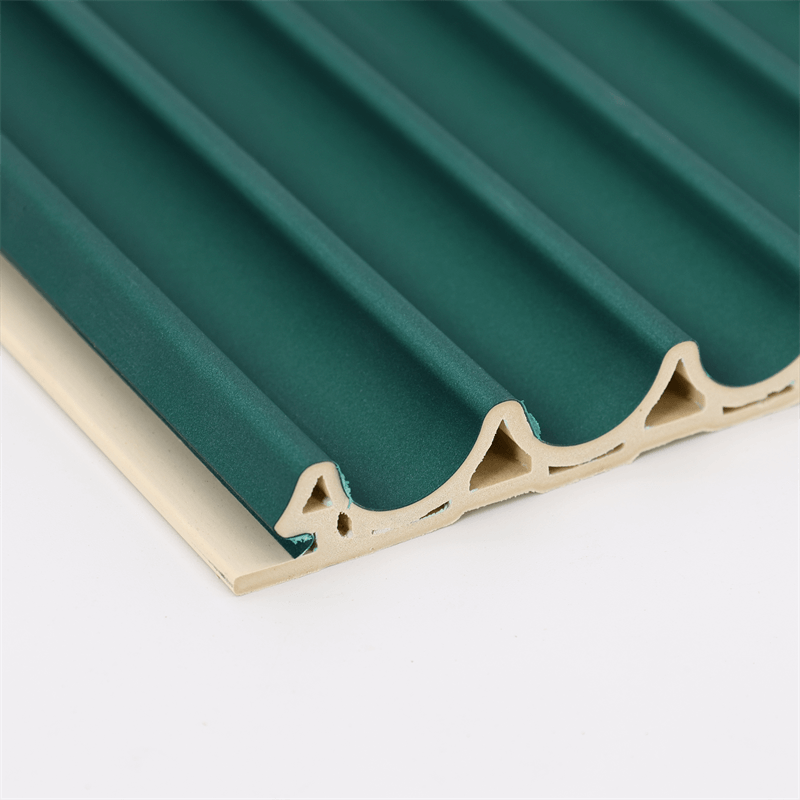
In an era where sustainability has become a critical consideration in all aspects of life, the construction and design industries are no exception.
As the world seeks greener alternatives to traditional materials, Wood-Plastic Composite (WPC) wood panels have emerged as a sustainable and stylish solution.
These panels, composed of a blend of wood fibers and recycled plastic, offer a remarkable balance between eco-friendliness, durability, and aesthetic appeal.
This article delves into the eco-friendly aspects of WPC wood panels, highlighting their sustainable attributes and the positive impact they bring to the environment and interior spaces alike.
The Eco-Friendly Composition of WPC Wood Panels
Utilizing Recycled Materials At the core of WPC wood panels lies a commitment to reusing waste materials.
The wood component is typically derived from agricultural residues or recycled wood fibers, diverting them from landfills and repurposing them for construction purposes.
Moreover, the plastic used in WPC panels often comes from post-consumer sources, such as recycled plastic bottles or packaging.
By incorporating these recycled elements, WPC wood panels contribute to reducing the burden on natural resources and minimizing the environmental impact of construction and design projects.
Reducing Deforestation One of the critical advantages of WPC wood panels is their role in curbing deforestation.
Traditional timber harvesting for wood-based products has led to significant ecological challenges and deforestation concerns worldwide.
By promoting the use of WPC wood panels, which rely on recycled wood fibers and agricultural waste, we can help preserve our forests and protect biodiversity.

Energy Efficiency in Manufacturing WPC Wood Panels
Low Energy Consumption The production process of WPC wood panels requires less energy compared to the manufacturing of conventional building materials like concrete or steel.
The extrusion and molding of WPC panels involve relatively low-temperature processes, resulting in reduced energy consumption during production.
This energy efficiency not only minimizes the carbon footprint of the manufacturing process but also contributes to overall resource conservation.
Lower Greenhouse Gas Emissions As WPC wood panels use recycled materials and consume less energy during production,
they lead to lower greenhouse gas emissions compared to materials that rely heavily on fossil fuels.
By choosing WPC wood panels over traditional wood or plastic products, designers and builders actively contribute to mitigating climate change and promoting a sustainable future.
Durable Design for Long-Term Sustainability
Longevity and Reduced Replacement Cycles WPC wood panels are known for their exceptional durability, resisting rot, decay, and insect infestations.
Their robust nature ensures that interior spaces maintain their integrity and beauty for an extended period, reducing the need for frequent replacements.
The long life cycle of WPC panels translates to less waste generation and a more sustainable construction approach.
Low-Maintenance Advantages WPC wood panels require minimal maintenance compared to traditional wood products.
Unlike natural wood, which often demands regular painting, staining, or sealing, WPC panels only need occasional cleaning with mild soap and water to retain their appeal.
The low-maintenance characteristics of WPC wood panels contribute to resource conservation and lessen the use of environmentally harmful cleaning agents.

The Aesthetics of Eco-Friendly Design
Natural Beauty and Warmth WPC wood panels capture the essence of natural wood, offering a warm and inviting ambiance to interior spaces.
The authentic wood-like texture and color variations evoke a sense of connection to nature, creating spaces that resonate with tranquility and well-being.
The combination of sustainability and aesthetic appeal makes WPC wood panels an attractive choice for eco-conscious designers and homeowners.
Versatile Design Possibilities Designers and architects appreciate the versatility of WPC wood panels, as they can be molded into various shapes and designs during the manufacturing process.
This flexibility allows for creative expression and the realization of unique interior concepts.
From rustic to contemporary designs, WPC wood panels cater to diverse design styles, contributing to the beauty and character of sustainable spaces.
Wood-Plastic Composite (WPC) wood panels exemplify the union of sustainability and style in the construction and design industries.
By utilizing recycled wood fibers and plastic, WPC panels reduce deforestation and alleviate the burden on natural resources, making them a vital component of eco-friendly design projects.
The energy-efficient manufacturing process further enhances their eco-credentials by minimizing greenhouse gas emissions.
Moreover, the durability and low-maintenance advantages of WPC wood panels ensure the longevity of interior spaces, reducing waste generation and promoting sustainable construction practices.
These panels not only offer the natural beauty and warmth of wood but also provide designers with a versatile canvas to realize their creative visions.
As we embrace a more sustainable future, incorporating WPC wood panels into interior design projects becomes an
eco-conscious choice that contributes to the preservation of the environment while creating beautiful and inviting spaces.
By championing sustainable and stylish alternatives like WPC wood panels, the construction and design industries can play a pivotal role in building a greener and more sustainable world.
